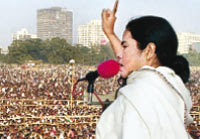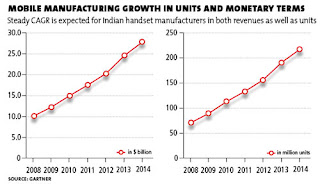IIPM Excom Prof Rajita Chaudhuri
Warfare: Strategically weak, are we?
Strategic thinking and military planning stem from political unity and coherence. Kautilya was the first to realise the need for unity and a powerful state to protect India from external invaders. He raised a massive 650,000-strong Mauryan army and generated a local RMA (revolution in military affairs) with a corps of 9,000 war elephants which were deployed to generate “shock and awe”. Kautilya was a pioneer in using information warfare against Alexander’s invading army. He thus unified India in just 25 years with his combination of war elephants, information war and covert operations.
Apart from Kautilya, no one ever thought of forward defence. Kautilya had secured the invasion routes by conquering Afghanistan and Baluchistan. After him, all the battles for the defence of Delhi were fought in the plains of Panipat and we lost each one of them. The Mughals could defeat Ibrahim Lodhi because they introduced the RMA of field guns, horsed archers and muskets – a deadly combination which caused Lodhi’s war elephants to panic and trample their own troops.
The third battle of Panipat was fought exactly 250 years ago between the Marathas and the Afghans of Ahmad Shah Abdali or “Shah Baba”. The Marathas had virtually won this battle, but ultimately lost it due to a total lack of discipline and coordination. One section of the Maratha troops moved out of the battlefield for no apparent reason and turned the whole tide of the battle. The Maratha artillery was taking a fearful toll on the Afghans when the Maratha mobile elements closed in from the flanks and came in the line of their own fire. The Indians thereby lost a winning battle. The problem was a lack of discipline and coordination. Indians have always been brave fighters individually. Their problem has been in functioning efficiently as a group.
The British organised the Indian sepoys into European-style modern Infantry battalions that were disciplined and efficient. The British native infantry defeated the Mughal style cavalry by generating the RMA of Infantry Battalions which could fire in disciplined rhythms, generate rates of fire of a thousand shots a minute and could decimate any cavalry charge.
India supposedly won its freedom via a peaceful and non-violent freedom struggle. Few realise the importance of the role played by Netaji Subhash Chandra Bose and his INA which shook the British and was instrumental in forcing them to leave. Mutinies had broken out in the British Indian Army and in Royal Indian Navy when the INA officers were put on trial at Red Fort. The British had crushed the peaceful Quit India Movement but they could no longer rely on the Indian Armed Forces as instruments of subjugation and control. So they left in a rather tearing hurry.
The post-Independence Indian political elite, however, tried to take the entire credit for the British decision to leave and attributed it to their non-violent struggle. They therefore laid far too much emphasis on soft power, diplomacy and peace. It was a leadership deficient in strategic thinking and skill. They neglected the military and discouraged strategic thought. The result was the tragic fiasco of the 1962 border war with China. It was an urgently needed wake-up call. India began to expand and modernise its military post 1962. Pakistan was worried and cynically decided to press home its eroding military advantage in the 1965 war. It was its last gamble to seize Kashmir by force and it failed.
The 1971 war was a historic and decisive military victory that broke Pakistan in two and put 93,000 prisoners of war in Indian captivity. In just 14 days Indian forces liberated Dacca and formed a new nation state. This local RMA of sorts was created by India’s complete dominance over the skies of Bangladesh. The Indian Army launched a swift blitzkrieg under the air umbrella. Indian fighter bombers helped to decimate the Pakistani Army’s resistance. In fact Gen. Niazi’s meeting with the then governor of East Pakistan, Adam Malik, in Dacca itself was attacked by the Indian Air Force fighters with rockets. The Mukti Bahini played a very significant role by waging covert action in the Pakistani Army’s rear and supplying accurate intelligence to the advancing Indian troops.
So far, we have failed to transform economic power into credible and usable military power. India’s political elite seem to think that nuclearisation has rendered conventional military force obsolete. This is a serious error. Today India faces a three front threat from China, Pakistan and Jihadis and Maoists. It rapidly needs to modernise its armed forces and encourage strategic thinking and awareness of military matters. The Bangladesh War revived the Kautilyan tradition of strategic thought. Let us not waste it again. There are no soft power answers to hard power realities. We can not afford to repeat 1962 all over again.
For More IIPM Info, Visit below mentioned IIPM articles.
Arindam Chaudhuri is Delhi franchise holder for i1 Super Series
IIPM ranks No 1 in International Exposure in the 'Third Mail Today B-School Survey'
Management Guru Arindam Chaudhuri Dean Business School IIPM
IIPM: What is E-PAT?
"Thorns to Competition" amongst the top 10 best sellers of the week.
IIPM RANKED NO.1 in MAIL TODAY B-SCHOOL RANKINGS
'Thorns to Competition' - You can order your copy online from here
IIPM Mumbai Campus
Warfare: Strategically weak, are we?
Strategic thinking and military planning stem from political unity and coherence. Kautilya was the first to realise the need for unity and a powerful state to protect India from external invaders. He raised a massive 650,000-strong Mauryan army and generated a local RMA (revolution in military affairs) with a corps of 9,000 war elephants which were deployed to generate “shock and awe”. Kautilya was a pioneer in using information warfare against Alexander’s invading army. He thus unified India in just 25 years with his combination of war elephants, information war and covert operations.
Apart from Kautilya, no one ever thought of forward defence. Kautilya had secured the invasion routes by conquering Afghanistan and Baluchistan. After him, all the battles for the defence of Delhi were fought in the plains of Panipat and we lost each one of them. The Mughals could defeat Ibrahim Lodhi because they introduced the RMA of field guns, horsed archers and muskets – a deadly combination which caused Lodhi’s war elephants to panic and trample their own troops.
The third battle of Panipat was fought exactly 250 years ago between the Marathas and the Afghans of Ahmad Shah Abdali or “Shah Baba”. The Marathas had virtually won this battle, but ultimately lost it due to a total lack of discipline and coordination. One section of the Maratha troops moved out of the battlefield for no apparent reason and turned the whole tide of the battle. The Maratha artillery was taking a fearful toll on the Afghans when the Maratha mobile elements closed in from the flanks and came in the line of their own fire. The Indians thereby lost a winning battle. The problem was a lack of discipline and coordination. Indians have always been brave fighters individually. Their problem has been in functioning efficiently as a group.
The British organised the Indian sepoys into European-style modern Infantry battalions that were disciplined and efficient. The British native infantry defeated the Mughal style cavalry by generating the RMA of Infantry Battalions which could fire in disciplined rhythms, generate rates of fire of a thousand shots a minute and could decimate any cavalry charge.
India supposedly won its freedom via a peaceful and non-violent freedom struggle. Few realise the importance of the role played by Netaji Subhash Chandra Bose and his INA which shook the British and was instrumental in forcing them to leave. Mutinies had broken out in the British Indian Army and in Royal Indian Navy when the INA officers were put on trial at Red Fort. The British had crushed the peaceful Quit India Movement but they could no longer rely on the Indian Armed Forces as instruments of subjugation and control. So they left in a rather tearing hurry.
The post-Independence Indian political elite, however, tried to take the entire credit for the British decision to leave and attributed it to their non-violent struggle. They therefore laid far too much emphasis on soft power, diplomacy and peace. It was a leadership deficient in strategic thinking and skill. They neglected the military and discouraged strategic thought. The result was the tragic fiasco of the 1962 border war with China. It was an urgently needed wake-up call. India began to expand and modernise its military post 1962. Pakistan was worried and cynically decided to press home its eroding military advantage in the 1965 war. It was its last gamble to seize Kashmir by force and it failed.
The 1971 war was a historic and decisive military victory that broke Pakistan in two and put 93,000 prisoners of war in Indian captivity. In just 14 days Indian forces liberated Dacca and formed a new nation state. This local RMA of sorts was created by India’s complete dominance over the skies of Bangladesh. The Indian Army launched a swift blitzkrieg under the air umbrella. Indian fighter bombers helped to decimate the Pakistani Army’s resistance. In fact Gen. Niazi’s meeting with the then governor of East Pakistan, Adam Malik, in Dacca itself was attacked by the Indian Air Force fighters with rockets. The Mukti Bahini played a very significant role by waging covert action in the Pakistani Army’s rear and supplying accurate intelligence to the advancing Indian troops.
So far, we have failed to transform economic power into credible and usable military power. India’s political elite seem to think that nuclearisation has rendered conventional military force obsolete. This is a serious error. Today India faces a three front threat from China, Pakistan and Jihadis and Maoists. It rapidly needs to modernise its armed forces and encourage strategic thinking and awareness of military matters. The Bangladesh War revived the Kautilyan tradition of strategic thought. Let us not waste it again. There are no soft power answers to hard power realities. We can not afford to repeat 1962 all over again.
For More IIPM Info, Visit below mentioned IIPM articles.
Arindam Chaudhuri is Delhi franchise holder for i1 Super Series
IIPM ranks No 1 in International Exposure in the 'Third Mail Today B-School Survey'
Management Guru Arindam Chaudhuri Dean Business School IIPM
IIPM: What is E-PAT?
"Thorns to Competition" amongst the top 10 best sellers of the week.
IIPM RANKED NO.1 in MAIL TODAY B-SCHOOL RANKINGS
'Thorns to Competition' - You can order your copy online from here
IIPM Mumbai Campus










